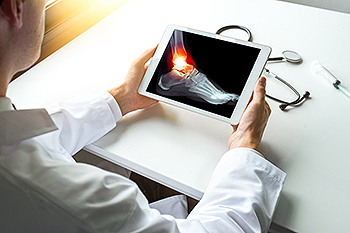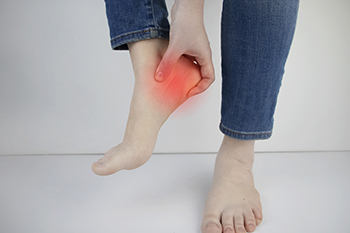
Arch pain often results from injury or structural problems within the foot. The arch, made up of bones, ligaments, and tendons, plays an important role in absorbing shock, supporting body weight, and maintaining balance. A common cause of arch pain is overpronation, where the foot rolls inward during walking, straining the arch and nearby tissues. Cavus foot, a condition marked by a high arch, may increase pressure on certain areas of the foot, leading to pain and instability. Posterior tibial tendon dysfunction can weaken the tendon that helps hold up the arch, causing pain along the inside of the foot and ankle. Flat feet, nerve conditions, overuse, and physical strain are also known to contribute to arch discomfort. A podiatrist can help identify the underlying cause and provide treatment, which may include orthotics, bracing, or surgery. If you have pain in the arch of your foot, it is suggested that you schedule an appointment with a podiatrist for an exam and appropriate treatment options.
If you have any concerns about your feet, contact one of our doctors from Advanced Foot & Ankle Medical Center. Our doctors can provide the care you need to keep you pain-free and on your feet.
Biomechanics in Podiatry
Podiatric biomechanics is a particular sector of specialty podiatry with licensed practitioners who are trained to diagnose and treat conditions affecting the foot, ankle and lower leg. Biomechanics deals with the forces that act against the body, causing an interference with the biological structures. It focuses on the movement of the ankle, the foot and the forces that interact with them.
A History of Biomechanics
- Biomechanics dates back to the BC era in Egypt where evidence of professional foot care has been recorded.
- In 1974, biomechanics gained a higher profile from the studies of Merton Root, who claimed that by changing or controlling the forces between the ankle and the foot, corrections or conditions could be implemented to gain strength and coordination in the area.
Modern technological improvements are based on past theories and therapeutic processes that provide a better understanding of podiatric concepts for biomechanics. Computers can provide accurate information about the forces and patterns of the feet and lower legs.
Understanding biomechanics of the feet can help improve and eliminate pain, stopping further stress to the foot.
If you have any questions please feel free to contact our offices located in Agoura Hills, Simi Valley, Thousand Oaks Marin St., and Thousand Oaks Haaland Drive, CA . We offer the newest diagnostic and treatment technologies for all your foot and ankle needs.









